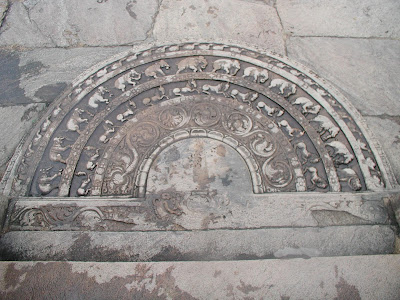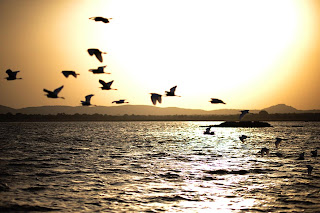The Vatadage
This circular relic house possesses an elegance and beauty that is rare even in ancient Sri Lanka. In line with the outer circle of stone pillars is a tastefully ornamented screen wall patterned with four petaled flowers.The flights of access stairs at the cardinal points are of stone and are beautifully carved. At the head of each flight is a Buddha statue in stone. The shrine is lavished with moonstones., guard stones and sculptured writings.
The shrine, like all dagobas in Sri Lanka, is oriented towards the cardinal points - north, south, east and west. Four Buddha statues face outwards, with their backs to the dagaba mound.
Il Vatadage
Questa casa circolare reliquia possiede un eleganza e la bellezza che è raro anche nelle antiche Sri Lanka. In linea con il cerchio esterno di pilastri di pietra è un muro di schermo gusto ornato modellato con quattro fiori petali.
Le rampe delle scale di accesso ai punti cardinali sono di pietra e sono ben scolpiti. A capo di ogni volo è una statua di Buddha in pietra. Il santuario è prodigato con pietre di luna. pietre guardia e scritti scolpiti.
Il santuario, come tutte le dagobas in Sri Lanka, è orientato verso i punti cardinali - nord, sud, est e ovest. Quattro statue di Buddha viso verso l'esterno, con le spalle al tumulo dagaba.

















